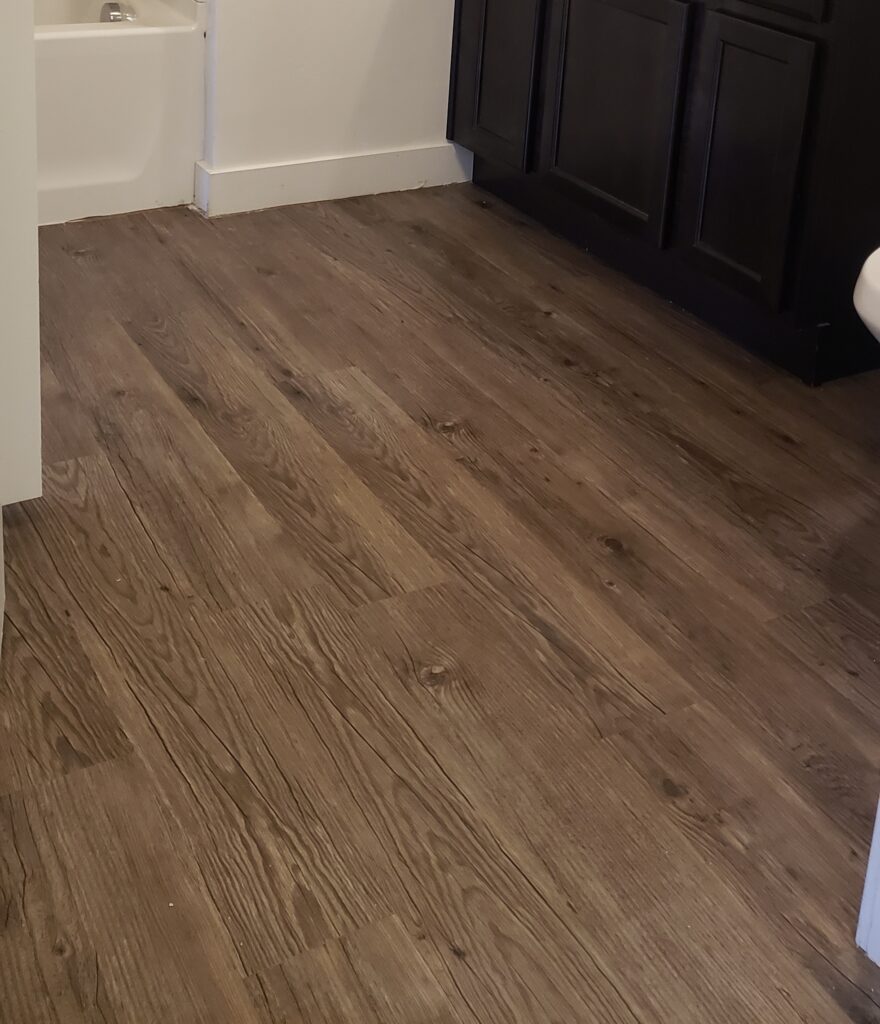Nowadays, most homes or apartments have hardwood floors in the kitchen, bathrooms, and maybe in the living room. It’s important to keep all of your floors clean, but how do you properly clean hardwood floors?

Cleaning hardwood floors can be as simple as using a dust mop or a vacuum over the floors for a spot or dust clean up. Deep cleaning can become a little more complex and time consuming. Both deep cleaning and dust pickup are so important to keep your hardwood floors looking great.
Dust Pickup
Based on Better Homes & Gardens website, when simply picking up dust or crumbs from off the floor, it’s best to use a microfiber mop or cloth, or a vacuum with a floor brush attachment. “Do not use a vacuum with a beater bar attachment, which can scratch a wood floor’s finish.”
Deep Cleaning
Deep cleaning (depending on foot traffic) should be done about every six months. Possibly more often if needed. Like I stated earlier, this can be complex and a little more time consuming than the weekly dusting.
Floor Cleaners
The first thing to do, especially if you just moved or if you recently had new flooring installed, is to figure out what cleaner to use on your floors. This cleaner can be home remedies or store bought floor cleaners. When buying a floor cleaning product, get a specific wood cleaner. “Don’t use vinyl or tile floor cleaners as these products will damage, rather than clean, wood floors.”
Finding a natural way to clean your floors is a great way to avoid harsh chemicals and to save money. Better Homes & Gardens natural remedy to keeping your floors clean is vinegar. “Clean wood floors with vinegar by adding 1/2 cup white vinegar to a gallon of lukewarm water.” Keep in mind, vinegar can dull some finishes, so clean a small subtle part of your floor first, before cleaning the whole floor.
Moping
When moping, use a specifically wood floor mop. Saturate the mop in the cleaning solution of your choice and wring it out enough that it is damp to the touch. Lightly mop your floor carefully avoiding standing water. Rinse mop and wipe up any excess liquid. Leaving standing water on hardwood floors can leave water damage, and may cause new floors.
Removing Stains
Stains can be tricky when it comes to hardwood floors. It all depends on where the stain is.
The first thing to do is to determine what kind of finish is on your hardwood. Better Homes & Gardens says “If the stain is on the surface, your floor probably has a hard finish, such as urethane. If the finish stain has penetrated through to the wood, the floor probably has a soft oiled finish, common in older homes whose floors have not been refinished and resealed.”
Hard Finish
Having a harder finish like urethane, could make the stain removal process so much easier. If you have a hard finish on your flooring, then the best way to remove a stain is to wipe the surface stain with a soft, clean cloth. “Never use sandpaper, steel wool, or harsh chemicals because they can permanently damage the finish.”
Soft Finish
This is where things can be difficult. Because the stain is under the finish, you will need to sand, stain, wax, and buff your floors. The following are remedies from Better Homes & Gardens regarding removing stains with a soft finish.
- “Remove dark spots and pet stains: Rub the spot with No. 000 steel wool and floor wax. If the area is still dark, apply bleach or vinegar and allow it to soak into the wood for about an hour. Rinse with a damp cloth.
- Remove heel marks: Use fine steel wool to rub in floor wax.
- Remove oil-based stains: Rub the area with a soft cloth and dish detergent to break down the grease. Rinse with clear water. If one application doesn’t work, repeat the procedure. Keep children and pets out of the room until you’re done. Let the spot dry, then smooth the raised grain with fine sandpaper.
- Remove watermarks or white stains: Rub the spot with No. 000 steel wool and floor wax. If the stain goes deeper, lightly sand the floor and clean with fine steel wool and odorless mineral spirits.”
